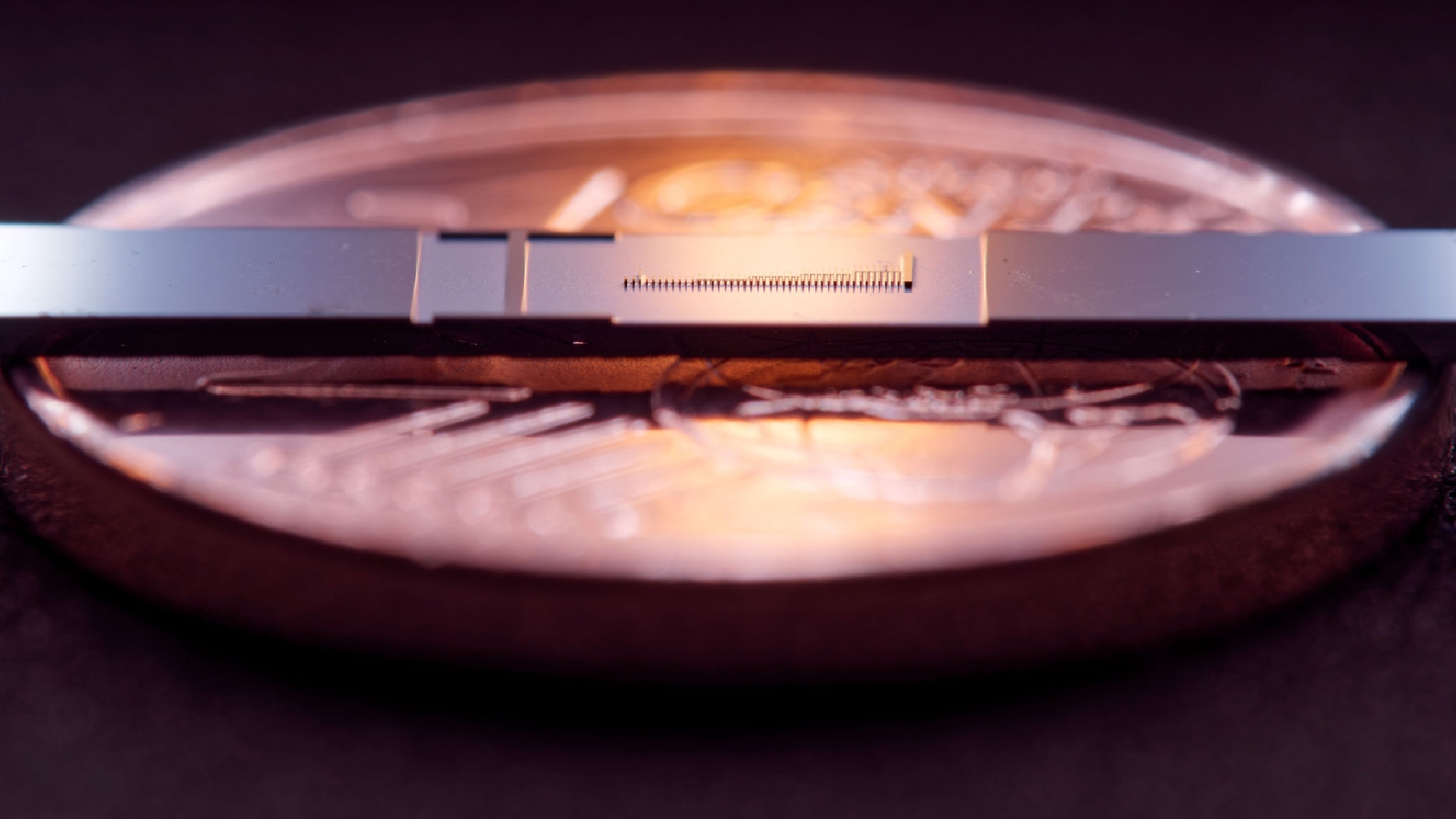World's smallest particle accelerator is 54 million times smaller than the Large Hadron Collider — and it works

Scientists recently fired up the world's smallest particle accelerator for the first time. The tiny technological triumph, which is around the size of a small coin, could open the door to a wide range of applications, including using the teensy particle accelerators inside human patients.
The new machine, known as a nanophotonic electron accelerator (NEA), consists of a small microchip that houses an even smaller vacuum tube made up of thousands of individual "pillars." Researchers can accelerate electrons by firing mini laser beams at these pillars.
The main acceleration tube is approximately 0.02 inches (0.5 millimeter) long, which is 54 million times shorter than the 16.8-mile-long (27 kilometers) ring that makes up CERN's Large Hadron Collider (LHC) in Switzerland — the world's largest and most powerful particle accelerator, which has discovered a range of new particles including the Higgs boson (or God particle), ghostly neutrinos, the charm meson and the mysterious X particle.
The inside of the tiny tunnel is only around 225 nanometers wide. For context, human hairs are 80,000 to 100,000 nanometers thick, according to the National Nanotechnology Institute.
Related: Why a physicist wants to build a particle collider on the moon
In a new study, published Oct. 18 in the journal Nature, researchers from the Friedrich-Alexander University of Erlangen–Nuremberg (FAU) in Germany used the tiny contraption to accelerate electrons from an energy value of 28.4 kiloelectron volts to 40.7 keV, which is an increase of around 43%.
It is the first time that a nanophotonic electron accelerator, which was first proposed in 2015, has been successfully fired, the researchers wrote in a statement. (Researchers from Stanford University have already repeated the feat with their mini accelerator, but their results are still under review).
Breaking space news, the latest updates on rocket launches, skywatching events and more!
"For the first time, we really can speak about a particle accelerator on a [micro]chip," study co-author Roy Shiloh, a physicist at FAU, said in the statement.
The LHC uses more than 9,000 magnets to create a magnetic field that accelerates particles to around 99.9% of the speed of light. The NEA also creates a magnetic field, but it works by firing light beams at the pillars in the vacuum tube; this amplifies the energy in just the right way, but the resulting energy field is much weaker.
The electrons accelerated by the NEA only have around a millionth of the energy that particles accelerated by the LHC have. However, the researchers believe they can improve the NEA's design by using alternative materials or stacking multiple tubes next to one another, which could further accelerate the particles. Still, they will never reach anywhere near the same energy levels as the big colliders.
Related: Black holes could become massive particle accelerators
That may be no bad thing, given the main goal of creating these accelerators is to utilize the energy given off by the accelerated electrons in targeted medical treatments that can replace more damaging forms of radiotherapy, which is used to kill cancer cells.
"The dream application would be to place a particle accelerator on an endoscope in order to be able to administer radiotherapy directly at the affected area within the body," study lead author Tomáš Chlouba, a physicist at FAU, wrote in the statement. But this is still a long way off, he added.

Harry is a U.K.-based staff writer at Live Science. He studied Marine Biology at the University of Exeter (Penryn campus) and after graduating started his own blog site "Marine Madness," which he continues to run with other ocean enthusiasts. He is also interested in evolution, climate change, robots, space exploration, environmental conservation and anything that's been fossilized. When not at work he can be found watching sci-fi films, playing old Pokemon games or running (probably slower than he'd like).

